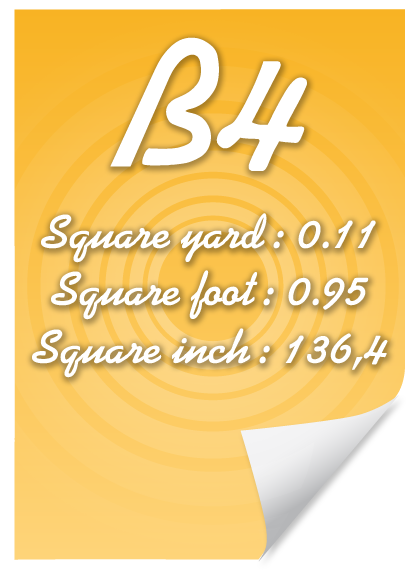B4 Paper Size
B4 size enters the category of formats suitable for writing. It has to be used in professional printing because there is no personnal printer or copier friendly to B format. B4 is used to edit tables, notes, little posters.
This format was first standardized by DIN 476, on the proposal of Walter Portsmann. This was based on a letter of Lichtenberg dating back to 1786, which outlined the interest of √2 ratio in length/width proportions for paper formats. This standard was then taken up in 1975 by the international standard ISO 216.
The √2 ratio has a very interesting advantage, since it maintains the proportions when the sheet is folded in the direction of its width. So, for B4, which adopts the √2 proportion (ie 1.4142 (a / b = 2b / a = √2)), we know that we can get a B5 bending, and a B3 doubling. These two formats will maintain the same proportions. A B4 is equal to ¼ B2, ½ B3, but also to two B5 sheets, 4 B6 sheets...
The surface of B4 is 0.088 m², with dimensions of 353 x 250 mm or 13.9 x 9.84 inches. Those can also be expressed in square yards: 0.11, in square foot: 0.95 or in square inches: 136.4.
The weight of a sheet of paper B4 shall be calculated in relation to its surface: 0.088 m². So we know that, for a paper weight of 120 g / m², we will have a weight of 0.088 x 120 = 10.56 grams per B4 sheet.
The measurements in inches of B4 is 9.84 x 13.90

B4 digital size in 150 dpi is 1476 x 2085 pixels
B4 digital size in 300 dpi is 2953 x 4169 pixels
2.7 / 5 (416 votes)













